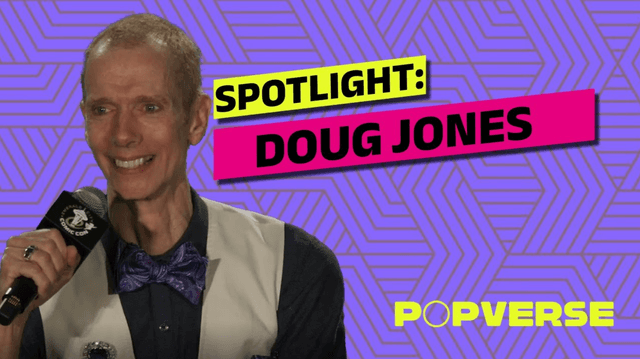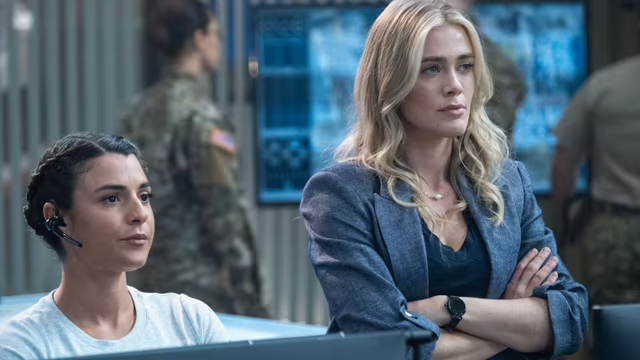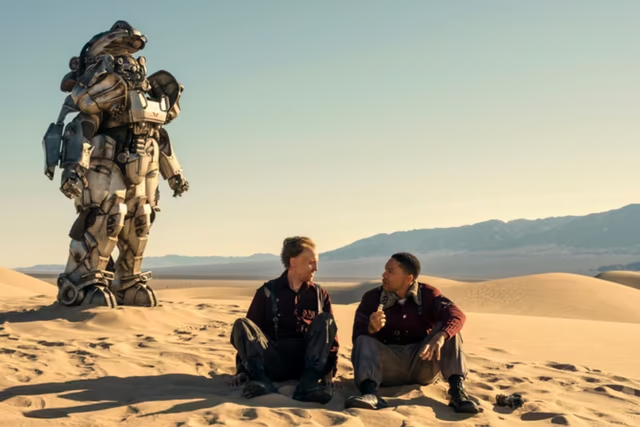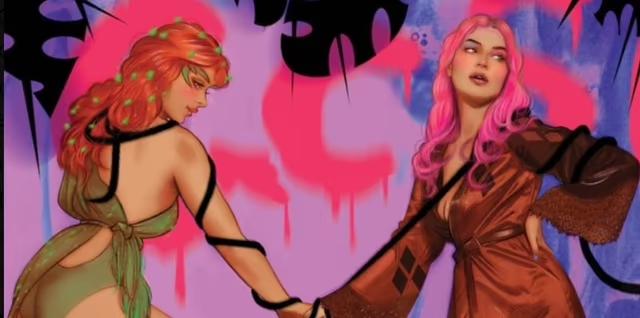If you click on a link and make a purchase we may receive a small commission. Read our editorial policy.
A kiss before dying: How Tom King and Greg Smallwood redefined Christopher Chance within the DC Universe.
Tom King and Greg Smallwood's acclaimed maxi-series The Human Target has come to an end. Here's how the series redefined Christopher Chance within the DC Universe.

Note: Spoilers for The Human Target below.
Across 12 issues, the creative team of Tom King and Greg Smallwood have brought obscure DC Comics character Christopher Chance into the spotlight in their maxi-series The Human Target. Created by Len Wein and Carmine Infantino, Chris Chance has made a career as a master impersonator taking the place of people targeted for assassination in order to draw the killers out and stop them. King and Smallwood’s story brings Chance’s prolific career to an end, with Chance out to find who exactly killed him after he ingests a lethal, slow-acting poison that only gives him days to live.
With the final issue now on the stands, here’s a look at how King and Smallwood have redefined the Human Target’s place in the DC Universe – by effectively killing him. But more than simply covering the final days of Chris Chance in an interesting twist on a murder mystery, The Human Target continues King’s postmodern evaluation of the DCU, often through its most overlooked characters, with a love story at its core. For those who are looking to read The Human Target in full, the first volume is on sale now, with the second volume, containing the series’ final issues, on sale July 18 and available for preorder.
The hardboiled death of Christopher Chance

The Human Target opens with Chris Chance taking on Lex Luthor as a client, agreeing to stand in for the DCU’s biggest megalomaniac when Luthor suspects an assassination contract is out on his head. What starts out like any other gig disastrously backfires for Chance, however, when he is fatally poisoned while masquerading as the Man of Steel’s longtime nemesis. He learns he has less than two weeks to live before the poison takes its full effect.
What follows is Chance coming to terms with his own mortality, often in scenic contemplative moments by the beach, more so than conducting a full-scale murder investigation. Chance moves through The Human Target like a classic noir hero, hard on his luck and left to his own devices as he faces a challenge virtually guaranteed to overwhelm him. And like any good noir story, our hero needs a femme fatale to string him along, just as likely to love him as she is to kill him. For the purposes of King and Smallwood’s story, fan-favorite Justice League International superhero Ice ultimately gets the chance to accomplish both.
A frosty femme fatale

Created by Keith Giffen J.M. DeMatteis, and Kevin Maguire, Ice was introduced in Justice League International as Tora Olafsdotter, a cryogenically powered superhero from Norway who joins the team. Elementally positioned as Fire’s best friend, Tora was the “good girl” of the JLI, bringing a sort of wide-eyed innocence to the team, especially in contrast to her then love interest, the hot-headed Guy Gardner, and the goofy buddy-heroes Blue Beetle and Booster Gold. This characterization makes Tora leagues more seemingly wholesome than a typical femme fatale archetype, one which helps keep the reader guessing as to who killed Chance. This is elevated by Smallwood’s classic artwork, which evokes a sort of timeless, early ‘60s aesthetic right down to the series’ covers. Tora isn’t the type one would expect to slip a mickey in a drink but is more like someone Chance could settle down with to live out his white picket fence dreams of domestic bliss.
Which is what makes Tora the perfect culprit, of course. The Human Target doesn’t place a significant emphasis on its central murder mystery, because Chance has already figured out who poisoned him-- it’s the woman he’s been trading pillow talk with since his ominous countdown began. This detail is largely ignored by Chance, who prefers enjoying his final days in a whirlwind love affair with Tora before he admits the truth as his death looms before him.
The girl-next-door image that Ice has been associated with for much of her comic book history is completely subverted in The Human Target, lowering the guard of those around her as Tora makes her own plans. It’s only in the final issue, after Chance’s promised death that the reader really starts to see how cold and calculating Tora can be when she prevents Martian Manhunter from investigating her role in Chance’s murder and sets her sights on the real Lex Luthor, her true target all along.
Justice League International deconstructed

It isn’t just Ice that gets a reevaluation over the course of The Human Target. Given Guy Gardner’s longtime romantic connection to Tora, it’s a cinch that he comes in, jealous that she has moved on to strike up a relationship with Chance. King and Smallwood portray Guy as a boorish retread of his portrayal in the early issues of Justice League International, knocked out twice, including by Tora herself, to underscore just how much of a chauvinistic joke of a character he is. Guy’s fellow Green Lantern G’Nort even gets in on the action, albeit reimagined from a cutesy squirrel to a middle-aged, overgrown rodent that rings closer to Barf from the Mel Brooks’ Star Wars parody Spaceballs than to any past depictions of G'Nort.
Even Martian Manhunter isn’t spared a light skewering of his usual DCU portrayal, particularly by the series’ ending. Rightfully suspecting Ice of being responsible for Chance’s death, J’onn J’onzz informs Tora that he plans to place her among the list of murder suspects. It is in that moment that Tora drops the wholesome facade and quietly mentions she is aware J’onn had an affair with Fire in clear violation of Justice League protocols, coercing him into silence and letting her take point on the subsequent murder investigation. Even the mighty JLI are flawed in The Human Target, and that falls perfectly in line with the rest of King’s DC work.
Tom King’s postmodern DCU

King has steadily reimagined DC’s iconic characters to be much messier and more flawed than they are typically portrayed, from Kyle Rayner falling in with violent revolutionaries in the maxi-series The Omega Men to offering a more cerebral approach to the Dark Knight in his lengthy Batman run. King’s controversial crossover event Heroes in Crisis was powered by postmodern handling of superheroes directly addressing their psychological trauma, most notably through Wally West, but the greatest example of King’s DCU storytelling sensibilities can be seen in his growing number of titles released through DC’s mature, often non-canonical publishing imprint DC Black Label.
Working with Mitch Gerads, King repositioned Mister Miracle, his wife Big Barda and their place within the eternal war between Apokolips and New Genesis in their universally celebrated maxi-series Mister Miracle. The story opens with Scott Free surviving a suicide attempt, with Barda’s love for him getting through his depression and the existential crisis of being placed in the middle of a war between literal gods.
King and Gerads were joined by Evan “Doc” Shaner for the maxi-series Strange Adventures, which reimagined Adam Strange as a war hero who becomes suspected of killing a disgruntled individual during a book tour chronicling his sci-fi exploits on the faraway planet Rann. By the end, Strange is revealed to truly be the killer while his celebrated wartime activities were a cover-up for the enormous atrocities he committed in the devastating conflict.
With The Human Target, for all the JLI heroes running around, King goes smaller and much more intimate. The love stories at the heart of King’s preceding work takes center stage much more explicitly here as Chance and Tora enjoy what little time they have left together in a relatively more light-hearted tale – not particularly hard when considering that Strange Adventures centered on an interstellar war criminal.
Like Strange Adventures, the murder mystery in The Human Target isn’t the narrative point so much as the inciting event. But what’s really key is how King and Smallwood address the theme of romantic love in comparison to King’s past work. Mister Miracle presented love as a saving force for Scott Free while love was used to justify very evil things in Strange Adventures. In The Human Target, King and Smallwood present love as the only thing worth giving a care to when the chips are down and death is on the door. And across King’s grimmer work, he’s effectively told an enduring love story wrapped up under the guise of a murder mystery with superheroes.
Written by Tom King, illustrated by Greg Smallwood, and lettered by Clayton Cowles, all 12 issues of The Human Target are available individually. The first volume, collecting the first six issues, is on sale now, with the second volume, containing the final six issues, on sale July 18 and available for preorder.
Best of 2000 AD's success surprised even the people behind 2000 AD
Follow Popverse for upcoming event coverage and news
Find out how we conduct our review by reading our review policy
Let Popverse be your tour guide through the wilderness of pop culture
Sign in and let us help you find your new favorite thing.
















Comments
Want to join the discussion? Please activate your account first.
Visit Reedpop ID if you need to resend the confirmation email.